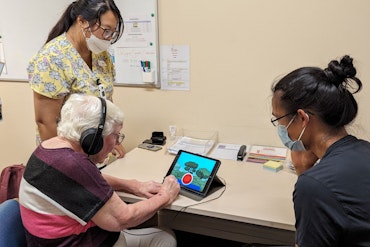Aged Care Taskforce report concludes taxpayers can’t foot the bill
The government currently funds 75 percent of residential aged care and 95 percent of the home care sector.
![<p>Future generations can’t afford to pay for the future of Australia’s aged care without co-contributions and the personal wealth of older Aussies. [Source: Shutterstock]</p>](https://agedcareguide-assets.imgix.net/news/articles/wp/agedcartreport__1203.jpg?fm=pjpg&format=auto&w=550&q=65)
Future generations can’t afford to pay for the future of Australia’s aged care without co-contributions and the personal wealth of older Aussies. [Source: Shutterstock]
Key points:
- The number of Australians aged 65 and over will more than double by 2063
- The number of people aged 85 and over will more than triple
- In 2022 – ‘23, expenditure on aged care was approximately $1,000 per person per annum and is projected to grow — in real terms — to around $3,500 in 40 years
The Final report of the Aged Care Taskforce was published on March 12, 2024, with its recommendations for a financially sound future in the sector.
The Taskforce was established to advise the Australian Government on funding arrangements, such as participant contributions for home care, reforms to arrangements for pricing and funding of hotel and accommodation costs in residential aged care, including the phasing out of Refundable Accommodation Deposits.
The report emphasised that Australia’s ageing population would pose further challenges in fairer funding for high-quality care, as demographic shifts would lead to younger taxpayers burdened with the tax burden of older, wealthier generations if changes are not implemented.
Council on the Ageing Australia Chief Executive Officer Patricia Sparrow said today signals an important next step in discussions around how the nation navigates funding and sustainability issues that aged care and older Australians face over the next decade.
“COTA Australia was pleased to be involved in the Taskforce, ensuring the voice of the most important people in the conversation — older Australians — was heard loud and clear,” she said.
“As the Taskforce report makes clear, ambitious action is required to set us up for an ageing population and increasingly complex aged care needs.
“The report makes recommendations that address access to aged care for all, regardless of their capacity to pay, as well as improved consumer protections, particularly for additional services in residential care.
“In addition, the Taskforce highlights the need for grandparenting and transition arrangements to support current participants and provide time for people to plan for the new arrangements.”
The report noted that Australia’s old-age dependency ratio measures the number of people aged 65 and over for every 100 people of traditional working age — 15 to 64. In 2022 – ‘23, this proportion was 26.6 percent and it is expected to increase to 38.2 percent by 2062–63, as per the Intergenerational Report released in 2023.
This means that the taxation burden for funding aged care services would impact a segment of the population that is becoming proportionally smaller: younger, working-age adults.
As gaps in the aged care workforce increase, this could create significant ongoing challenges to delivering quality care, as the government has attempted to mitigate workforce attrition through a 15 percent wage increase among those working in the sector.
“The conversation about the long-term financial sustainability of aged care is a crucial one and one which we can’t afford to shy away from,” the COTA Australia CEO said.
“All of those conversations need to be centred around the needs and rights of older Australians, ensuring they’re very clear on where their money is being spent and confident they’re getting the quality service they deserve.
“Older people have told COTA Australia over many years that they would be prepared to pay more for aged care if the quality is improved; a clear safety net to protect those who can’t afford to pay is in place; there are strong consumer protections for all participants and providers were accountable and transparent about where and how taxpayer funds and individual contributions are being spent.
“There’s no question we need to continue to improve the quality of service that people are currently receiving and the Taskforce report supports that this is what needs to happen.
“[The] government has been implementing recommendations from the Royal Commission and this needs to continue to ensure quality continues to improve.
“We need to make sure that there are strong protections in place for older people and their families and we need to know that people’s money is being spent where it needs to be — not lining the back pockets of providers. This will be helped by the recently released ‘Dollars Going to Care’ reporting that is now available on My Aged Care.
“We look forward to seeing the Federal Government’s response to the Taskforce report and will continue to advocate to ensure older people get the quality and service they deserve.”
The Older Persons Advocacy Network, another peak advocacy body involved in the consultation process, has welcomed the newly released report into funding arrangements for aged care in Australia.
OPAN Director of Policy and Systemic Advocacy Samantha Edmonds said the organisation wanted to explore the safety net provisions in more detail.
“We need to ensure our aged care system is sustainable and can meet the needs of our growing ageing population,” Ms Edmonds said.
“It is also critically important that we don’t create a two-tiered system, where those who can afford to pay get a first-class service and those who can’t afford to pay receive inadequate care.
“During the consultation process for this report, our message was clear: we must ensure equitable access to aged care services, especially for our most vulnerable people, regardless of their capacity to pay.
“Our 2023 Presenting Issues report, which analysed the 36,900 cases handled by aged care advocates across OPAN’s national network, found that transparency of fees and charges within both residential aged care and home care was a key issue for residents.
“Transparency of any fees and charges is critical, especially if the government proceeds to make further users pay for their aged care.”
The report suggested that home ownership may be one of the key factors for financial contributions made by aged care recipients in funding the future of the sector, rather than force those not receiving care to pay more during a cost-of-living crisis.
To read the report in full, please visit the Department of Health and Aged Care to learn more.
Do you think the younger generations can afford to pay more or do you believe that co-contributions could alleviate the tax burden? Let the team at Talking Aged Care know and subscribe to the newsletter for more information, news and industry updates.
Related content:
How an ageing population permanently changed the Australian economy
What is money being spent on in Australia’s aged care sector?























